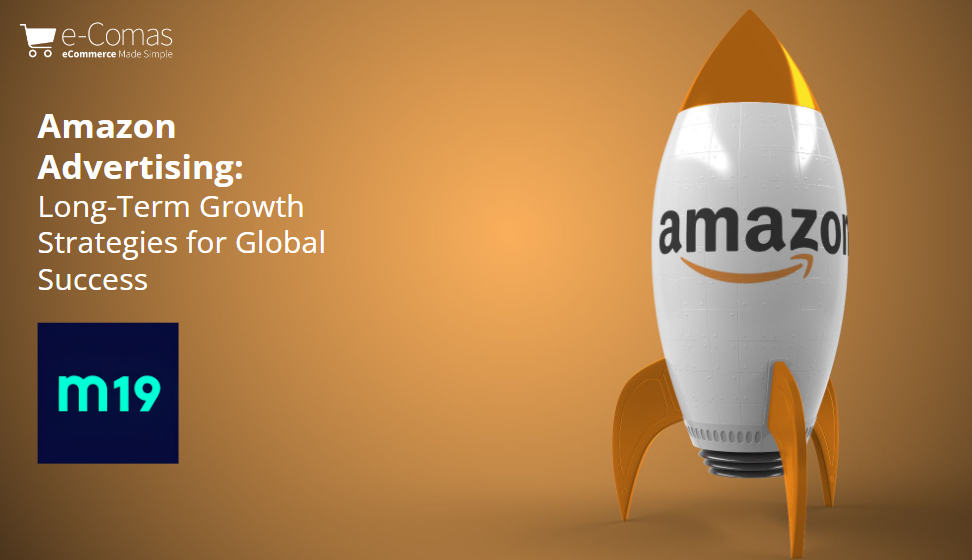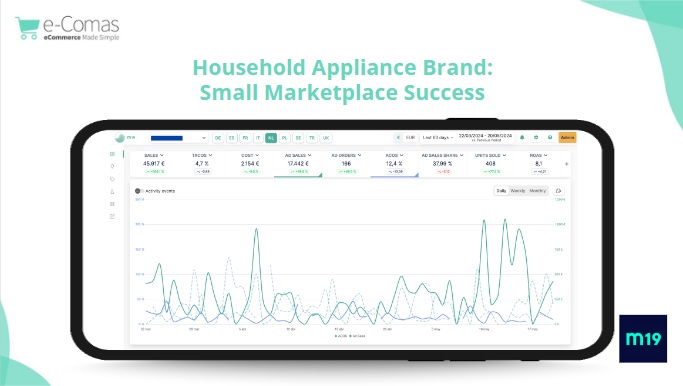Growth vs profitability: how to advertise long-term on Amazon

Amazon advertising is so sophisticated now, it’s easy to think as soon as you start your campaign, you’ll see strong results.
But the reality’s quite different, and you have to manage your expectations.
Different ad campaigns work for different purposes. If you’re launching a product on Amazon, your ad strategy will look very different from that of an established brand building their profitability.
There’s no one perfect way to advertise on Amazon. This blog looks at what strategies work for which brands, and when.
Growth, or profitability?
Profitability comes after growth.
A brand launching in a new marketplace, with new ad campaigns, is unlikely to see much profitability at first. It’s easy for such a brand to become disillusioned with the higher cost of advertising: brand awareness grows over time, and keyword ranking takes a lot of time.
For that reason, we say profitability should not be one of your top considerations when launching: it’s a long-term benefit, and can’t be forced into a short-term marketing plan on Amazon.
The key is to have the right KPIs in mind for either growth or profitability.
Growth vs profitability: which KPIs/metrics?
Here are some of the most common metrics used on Amazon to measure growth and profitability:
-
Profitability metrics
ACoS: This is Advertising Cost of Sales, a percentage calculated by dividing ad spend by ad revenue. A lower ACoS generally indicates higher advertising efficiency, so sellers usually aim to keep it low - but that doesn’t work when you’re trying to grow your business.
TACoS: Total Advertising Cost of Sales is your ad spend divided by your total sales - both ad sales and organic sales - which gives you a broader view of your ad effectiveness. It can help you see how reliant on advertising your products are, and the effect of your ads on organic sales.
ROAS: Return on Ad Spend measures the ROI of your advertising. It gives you a ratio of ad spend to sales: a ROAS of 5:1 would mean you made $5 for every $1 you spent.
Net PPM: Net Pure Profit Margin is used by Vendor accounts on Amazon to measure profit. It’s great for gauging how happy Amazon is with your account, and therefore how likely they are to keep reordering from you.
-
Growth metrics
CVR: This is conversion rate, which measures the number of page visits that result in a sale. It shows you the level of engagement you’re getting from shoppers.
CTR: Your click-through rate tells you how many times people click on your ad. A high CTR shows that people find your ad relevant and compelling enough to click on; low CTR might mean that you should adjust your ad content, your product listing or your price point.
Search volume: This shows you how many times a certain keyword was searched for by shoppers, and is a vital part of keyword research. You can refine your keyword targeting based on search volume.
If you’re launching your brand into a new marketplace, you need to have the right expectations. Brand awareness will be super low. You must be patient because your ACoS will be high at first: it will come down gradually, and profitability will come.
Product launch vs established brand: how to use the metrics
Basically, focus on ACoS, TACoS and ROAS when you’re an established brand. While you’re still growing, the KPIs you focus on should be related to reach and brand awareness: investing in your visibility by improving your CVR and CTR.
We’ve talked about the long-term growth-to-profitability pipeline, but some brands seek success in getting as many sales as possible in the short-term, with short-term profitability as the result. We think focusing instead on building a strong brand presence over time will make you far more money in the long run: once your brand is known, you will achieve many more sales with a much lower ACoS.
Another point: at e-Comas, we believe there’s no reason for any brand selling on Amazon in one country not to sell in other countries. Knowing which metrics to use for launching into a new marketplace, and what to expect from your ad campaigns when you do, is a key part of achieving growth quickly and strong profitability in the long term.
Brand power and competition
Once you start to grow and get brand recognition, you can split your ad campaigns by branded traffic and generic traffic. A generic traffic campaign will have higher ACoS, but it can help you be more competitive: competing with other brands helps you rank higher, makes your brand better known and helps you protect your brand. If competitors are bidding on your brand name, you can make it harder for them.
You can also create a flywheel effect on sales by staying on top of your keyword research. Regularly check the most relevant keywords and boost them for your campaigns: the more visible you are on those, the higher your sales will be.
Building your brand story: use every tool
Shoppers respond well to a brand story.
Use all the data available through Amazon to analyse your typical shopper and build your brand story and messaging around your target customer. Tailor your content, in both your listings and your advertising, to that customer.
We also recommend leveraging social media and even hiring a local influencer, especially if you’re launching into a new marketplace.
I think as a brand, especially launching a new marketplace or geography. So once you have all the data that we talked about, so really the analysis on the campaign on the on the on the typical shopper that you usually have to integrate everything into your into your brand story. Our Head of Ads, Marius Popov, says: “Once you have a brand story, with a clear message that you want to send into that specific marketplace, you need to leverage it throughout your content, your advertising and your targeting. Create buzz around your brand in that specific marketplace. Leverage all the buttons that you can to show your brand to the local marketplace.”
Growth strategy vs profitability strategy: an example

A seller sells a product on Amazon in the Netherlands. It’s a successful household appliance brand, in a relatively small marketplace. They’re using a simple ad structure: category ads and some brand defence ads. They’re using AI software from our partner M19 to do daily keyword testing and maintaining product targeting and strong traffic.
They invest 2,000€ in their ad campaigns and increase ad sales by 88%, achieving a decrease in ACoS of 13 points over the previous 60 days.
The same brand in Germany spends 11,000€ over the same period. Their ad structure is more complex here: category campaigns, brand defence but also competitor attack campaigns, and keyword ranking campaigns.
In the Netherlands, the brand is focusing on profitability: lowering the cost as much as possible because it’s a smaller marketplace with less potential for growth.
In Germany, the brand uses more of a growth structure. Their cost of advertising hasn’t decreased, but their sales have multiplied and they have taken more risks to win more market share.
Using M19, they increase their ad sales by 68%, and their ACoS is down six points.
Michelle Gallardo, Customer Success Manager at M19, says: “This is the same brand, it’s just in another marketplace. They are not copy-and-pasting what they do in Germany in the Netherlands. They have different structures, and both work well because they understand the difference in these two marketplaces - and they are having success in both of them.”
Plan and manage your expectations
Marius says: “The beginning of each product launch, and especially when launching to a new marketplace, is when things are toughest. It’s an uphill battle: you might see a huge ACoS, or a very low ROAS; the profitability will be on the low side.
“My advice is to keep the same strategy, have a long-term plan, have a long term P&L and take this into consideration when launching - so you have a clear budget for advertising, and have real expectations on profitability. Having real expectations will make sure you’re not demoralised during the off-periods of your launch or your product lifecycle.
“Try to resist pulling back on the most important keywords, and the most important campaigns that are delivering most of your sales. Have patience in your strategy, long-term planning and resilience.”
About M19
M19 is one of our trusted partners. They provide an AI tool to optimise your Amazon campaigns based on your goals. It’s performance-based, automatically searching and trying new keywords every day to optimise your advertising efficiency. It finds the keywords with the best traffic and conversion, in different languages across every marketplace you’re on, and also decreases your spend on keywords that are not working for you - saving you time and helping you to escalate your business faster.
Want to grow globally and get profitable on Amazon? Give the e-Comas team a call today - or watch our webinar with Michelle Gallardo about long-term growth strategies for global success on Amazon